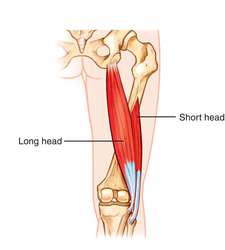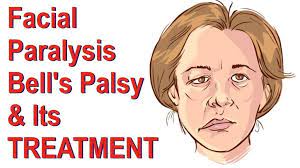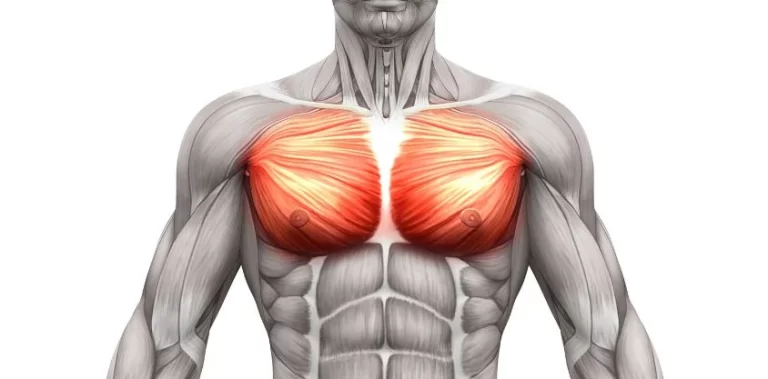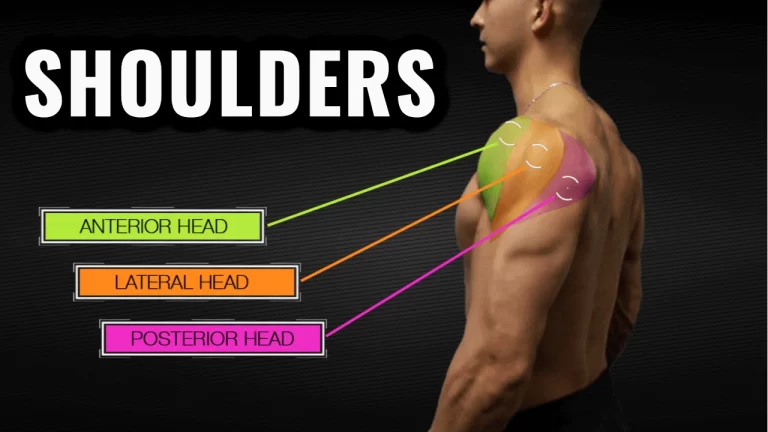All you need to know about Frozen Shoulder
Frozen shoulder is also known as Adhesive capsulitis (AC) is the condition that affects the shoulder joint. Over time, it becomes very hard to move the shoulder.
Usually, It involves pain and inelasticity that develops gradually, gets worse, and then goes away. This can last from a year to 3 years.
The word ‘frozen’ is because you cannot move your shoulder due to terrible pain.
Table of Contents
What is Frozen Shoulder?
Your shoulder is of three bones that form a shoulder joint(ball and socket joint). The three bones are your upper arm (humerus), shoulder blade(scapula), and the collarbone(clavicle).
A shallow socket in your shoulder blade holds the head of the upper arm bone. There are also tissues surrounding the shoulder joint that holds everything together. This is called the shoulder capsule.
In a condition where the shoulder does not have any issue, the capsule’s folds can expand and contract as the arm moves into different positions. There is a synovial fluid present that lubricates the shoulder capsule and the joint.
Now, frozen shoulder occurs when this shoulder capsule
become inflamed and scarring develops. The formations made by scars are called adhesions. As the capsule’s folds become thick and tightened, shoulder movement becomes restricted, and moving the joint becomes too painful. There is less synovial fluid in the joint in many cases. This is known as adhesive (scarring) capsulitis (inflammation of the capsule) or frozen shoulder.
Symptoms
The main symptom of frozen shoulder is pain and stiffness. Usually, pain from a frozen shoulder is aching and dull.
Some people feel an excess of pain at night that makes it difficult to sleep.
People with frozen shoulder reported pain in the shoulder and in top part of the arm. Pain goes from shoulder to top of the arm. The pain is usually located over the outer area of the shoulder.
Typically, the frozen shoulder has three stages, Each stage has its symptoms and timeline.
Three stages of Frozen Shoulder:
Freezing Stage
- Whenever you move your shoulder, you develop pain.
- The pain can sometimes become too severe.
- The pain may hurt more at night.
- The freezing stage lasts from 6 to 9 months.
- Shoulder’s movement becomes limited.
Frozen Stage
- Pain starts getting better but stiffness becomes worse.
- Shoulder’s movement becomes more limited.
- It becomes difficult to go through daily activities.
- This stage lasts from 4 to 12 months.
Thawing Stage
- At the thawing stage, the shoulder’s movements come back to normal.
- It lasts from 6 months to 2 years.
Causes
There is no exact cause for frozen shoulder.
You can develop a frozen shoulder if your shoulder is immobile due to some surgery or disease.
Women are more likely to develop it than men.
Certain medical conditions can increase the risk of developing the frozen shoulder.
There are some risk factors that could lead to the frozen shoulder which are:
Age and Sex
Women with age above 40 are more likely to develop frozen shoulder than men of the same age.
Diabetes
If you have diabetes, you are at high risk of developing a frozen shoulder. The connection between diabetes and frozen shoulder is yet unknown but 10% to 20% of diabetic patients develop this condition.
In addition to this, diabetic patients with frozen shoulder suffer from a greater degree of stiffness that lasts for a longer time before the “thawing stage”.
Reduced Movement
If you do not move your shoulder then you can develop a frozen shoulder. Immobility can be due to recovery from stroke, mastectomy, broken arm.
Anything that restricts arm movements can lead to frozen shoulder development.
Diseases
There are certain diseases that can cause frozen shoulder development.
These diseases can increase the risk of developing the condition.
- Thyroid- both Overactive(hyperthyroidism) and Underactive(hypothyroidism)
- Cardiovascular disease
- Tuberculosis
- Parkinson’s disease
Can Frozen shoulder be prevented?
Prevention can save you a lot of pain and trouble.
To prevent the frozen shoulder, focus on the movement of your shoulder. Try to spot minute changes.
Compare mobility of left and right shoulder.
Even if you have undergone major surgery or heart stroke, do not let your shoulder be immobile for a longer time.
Gentle exercises may prevent frozen shoulder.
Stretching can also be very helpful.
Stay active, physical activities can save you from the condition.
There is no specific cause for the frozen shoulder but certain precautions can prevent the condition to worsen.
Dos and Don’ts for frozen shoulder patients
There are some dos and don’ts for you to avoid complications and to have a speedy recovery.
Do’s
Use affected arm regularly
You will want to do nothing with your affected arm due to pain in the shoulder but that will make the condition even worse. One of the most common causes of frozen shoulder is immobility. If the shoulder and arm are immobile, the shoulder capsule will increase the tightening and thickening.
Move your shoulder gently and also perform some light exercises to improve the condition.
Pay attention to your posture and Sleeping position
Frozen shoulder can make you sleep deprived, patients with frozen shoulder experience reduced sleep quality. But getting enough sleep is beneficial for the healing process.
Make sure you do not sleep on the affected arm.
Make it routine to put a pillow under your affected arm and place your arm on your stomach.
Focus on your posture while sitting and while standing. Keep your back straight and shoulders outward.
Attend physical therapies
Physical therapy is a very important part of frozen shoulder treatment.
Your therapist will teach you exercises to stretch the joint capsule. When your condition improves, your therapist can make you do some strengthening exercises. Be consistent in attending physical therapy sessions. Physical therapy can prove to be a boon in the healing process.
Never do any kind of exercise without the approval of your therapist.
Don’ts
Don’t do activities that are likely to cause pain
Avoid the movements that can worsen your pain like pulling, jolting and, jerky.
Yes, It is important to not let the shoulder be immobile but you have to restrict some movements that are more likely to increase the pain.
Take your doctor’s advice before starting doing exercises, stretching, sports.
Don’t Be Inconsistent
Frozen shoulder takes time to heal. It is the constant healing process.
There can be times when you would be tired and would not feel any better in the condition. But do not quit there.
Diagnosis
A frozen shoulder can be diagnosed with a physical exam. Physical exams are done to check the intensity of pain and shoulder movement’s limit. Your doctor can conduct a physical exam in two parts: An active physical exam and a Passive physical exam.
The active part of the exam – Your doctor will ask you to move your shoulder in all directions.
The passive part of the exam – Your doctor will move your shoulder to spot the differences.
Both, active and passive range of motions are affected by frozen shoulder. Your doctor will compare the active range of motion to the passive range of motion.
If you have a frozen shoulder, you must be having a limited range of active and passive motion.
Sometimes doctors also use anesthetics(injection to numb the pain). It is done to make a better judgement out of the physical exam, to determine the active and passive range of motion.
Usually, a frozen shoulder is diagnosed with signs, symptoms, and physical exam but your doctor may have your shoulder tested by imaging tests.
Imaging tests may help your doctor to rule out other conditions with similar symptoms.
Imaging tests can be:
X-rays: X-rays show dense structures, like bones. X-rays may show other problems in your shoulder, such as arthritis.
Magnetic Resonance Imaging(MRI) and Ultrasound: MRI and ultrasound can create better images of soft tissues. They can identify other problems like torn rotator cuff in your shoulder.
Treatment
The main goals of frozen shoulder treatment are to increase movement and decrease pain. There are different ways through which frozen shoulder can be treated:
Self Care:
You can start physical therapies and also do some light exercises that are physically demanding but do not trigger shoulder pain. These stretching and strengthening exercises for the frozen shoulder will help you increase your shoulder’s mobility.
- Pendulum Stretch
Relax your shoulders.
Stand and lean over slightly, make sure that the affected arm is hanging down.
Swing the arm in a small circle.
Start with performing 5 to 10 revolutions in each direction, once a day.
As the condition starts getting improved, increase the diameter of the swing and the number of revolutions.
- Towel Stretch
Hold a three-foot-long towel in a horizontal position behind your back.
Pull the towel upward with your good arm so that, the affected arm can be stretched.
You can do this 10 to 20 timesa day.
- Finger walk
Turn towards a wall three-quarters of an arm’s length away.
Touch the wall at your waist level with the tips of your fingers(fingertips of the affected arm).
Bent your elbow slightly, slowly bring your fingers up the wall until you’ve raised your arm as up as you comfortably can.
There should be no pressure on the shoulder’s muscles.
Lower the arm slowly and repeat the process.
Perform this exercise 10 to 20 times a day.
- Cross-body reach
You can do these exercises either sitting or standing.
With your good arm exert upward pressure at the elbow of the affected arm and lift it, then turn it across your body.
Stretch the shoulder by exerting gentle pressure.
Hold it for 15 to 20 seconds.
You can do this 10 to 20 times per day.
- Armpit Stretch
Locate a shelf that is breast-high, now use your good arm to lift the affected arm onto it.
Open up the armpit by gently bending your knees.
Try to stretch the armpit further with each knee bend.
Do this 10 to 20 times each day.
Strengthening Exercises: As your condition starts improving and range of motion increases, you can start doing strengthening exercises.
- Outward Rotation
Hold a rubber exercise band between your hands, both the elbows should be at 90-degree.
Take the lower part of the affected arm outwards 2 to 3 inches, hold for 5 seconds.
Repeat the exercise 10 to 15 times a day.
- Inward Rotation
Hook one end of a rubber exercise band around the doorknob of the closed door.
Hold the other end of the rubber exercise band with theaffected arm, hold your elbow at a 90-degree angle.
Pull the band towards 2 to 3 inches of your body and hold for five seconds.
Repeat 10 to 15 times, once a day.
Stop doing these exercises if they induce pain and consult your doctor.
Medications: Pain relievers, such as aspirin and ibuprofen (Advil, Motrin IB), can help reduce pain and inflammation due to frozen shoulder.
If light pain killers would not work, your doctor may prescribe strongerpain-relieving and anti-inflammatory drugs.
Steroid injections: There is an injection called corticosteroids,Injecting it into your shoulder joint may help decrease pain and improve shoulder mobility. It is especially used in the early stages of the process.
Joint distension: Your doctor will inject sterile water into the joint capsule. It will stretch the tissue and make it easier to move the joint.
Shoulder manipulation: In this procedure, Doctors will give you a general anesthetic to make you unconscious so that you feel no pain. Then the doctor moves your shoulder joint in different directions, which can loosen the tightened tissue.
Surgery: Surgery is only needed when all other treatments do not work. It can be an arthroscopic procedure. It is done with light, pencil-sized tools that are inserted into your shoulder through tiny cuts.
Acupuncture: Acupuncture is the technique that involves inserting extremely thin needles in your skin at specific points on the affected part of your body. The needles remain in place for 15 to 40 minutes. Because needles are too thin and can be move or manipulate, they are insert superficially. Most of the acupuncture treatments arepainless. The pain due to a frozen shoulder can be very severe and turn your life upside down. Do not ignore it. Start taking your pain and changes in the arm movement seriously.








6 Comments